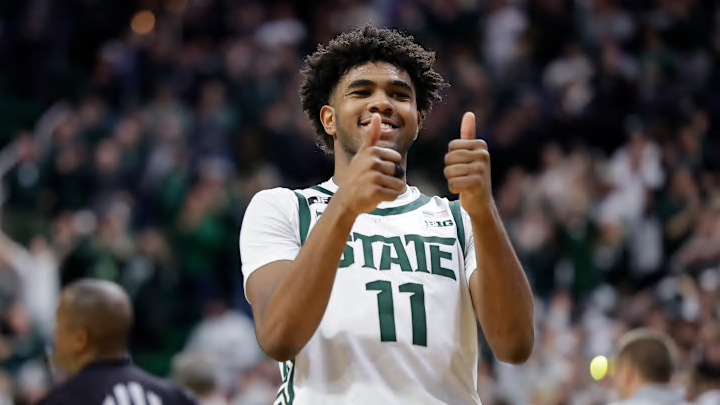On May 29, the Blazers invited six more potential draftees for a round of workouts at the team practice facility. Unlike every workout thus far, this one features a spate of players believed to be available at pick 11: Asa Newell of Georgia, Jase Richardson of Michigan State, Liam McNeeley of UConn, Rasheer Fleming of St. Joseph’s, Will Riley of Illinois and Hansen Yang, who last played with the Qingdao Eagles of the Chinese Basketball Association.
Joe Cronin’s end-of-season press conference saw him pleased with the development of the team and the emergence of a team identity in which defense is held in high regard—indeed, the trio of All-Defense second-teamer Toumani Camara, Deni Avdija, and Donovan Clingan, along with an improving Scoot Henderson seem to espouse that fact.
But lost within that configuration is the ability to shoot threes, something the Blazers did poorly last season. With the looming loss of Anfernee Simons (and perhaps Jerami Grant) and in a league increasingly trending outward, this is a category in which the Blazers desperately need help. Let’s take a look at which of these prospects could help Portland the most in these two key areas.
Rasheer Fleming
Fleming had the biggest height-to-wingspan ratio at the combine, posting the fourth-largest wingspan despite being just the 20th tallest. He also averaged nearly two blocks and steals per 36 minutes. While no defensive metric is perfect, Fleming leads the field in defensive rating and defensive win shares.
Questions loom about the level of competition he faced; St. Joseph’s never faced a ranked opponent in the entire season and had lackluster outings when matched up directly against projected draftees JT Toppin and Yaxel Lendeborg.
Jase Richardson
Measuring just 6’1” barefoot, it comes as a pleasant surprise that Jase Richardson leads the field—by far—in the defensive box plus-minus. Second only to Fleming in DRTG and DWS, he is certainly a plus-defender at the guard position, something that evaporates when the Blazers’ starters take a seat on the bench. Unlike Fleming, Richardson faced ranked opponents all season, even decisively outplaying Dylan Harper.
Jase is the only player in the field who shot over 40 percent from three at a decent volume, shooting nearly five per 36 minutes. Given his shooting percentages, that frequency may have been greatly enhanced if not for his shockingly low usage rate of 18.4 percent. Despite that, he was able to maximize his impact on the game, meaning his off-ball and spot-up shooting numbers will likely translate extremely well in a fast-paced offense like Portland’s.
Liam McNeeley
Though McNeeley’s 38/32/87 shooting splits at UConn look iffy at best, it’s important to note that last year’s UConn is not the same as the one that captured two straight national titles. McNeeley was asked to do a little too much on-ball creation, and his shooting percentages suffered.
During his high-school season before that, he had a much better supporting cast, which included Asa Newell, Derik Queen, and Cooper Flagg. In that season and on a more talented roster, McNeeley connected on 44 percent of his threes.
Wild card: Hansen Yang
Simply put, Yang underperformed in raw combine numbers but played well in the combine scrimmages. Averaging 11.5 points, 3.5 rebounds, and four assists in 18.5 minutes, Yang’s sheer size (7’1” barefoot, 252lbs) and unique skillset make him an intriguing late-round flyer. Questions about competition level may be overblown as Yang held his ground against G-League players in limited minutes.
May 28 was the deadline for players with remaining college eligibility to withdraw from the draft and return to school. Perhaps unsurprisingly, due to the NCAA’s newfound NIL policy, many chose to return, leaving the draft’s projected second round full of college seniors and those playing in foreign leagues.
Insofar, the Blazers have worked out more prospects than any other team, with this workout bringing the total to 24 players.
